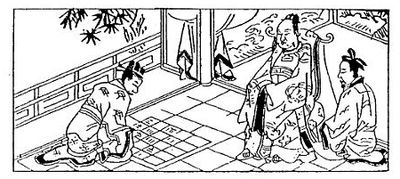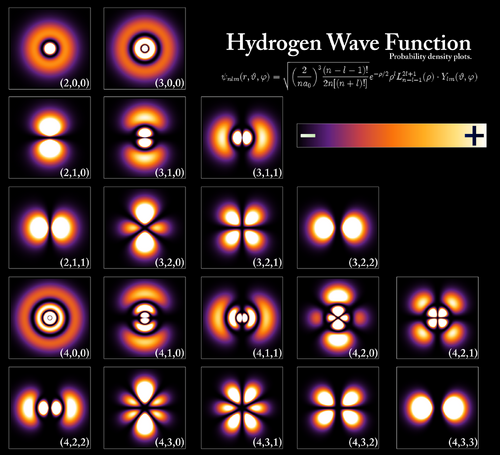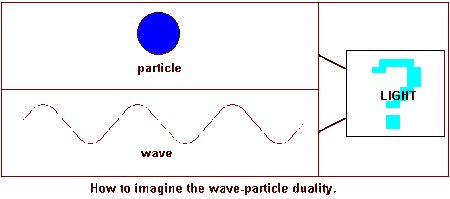By: Tao Steven Zheng (郑涛)
This article was originally posted on Brilliant.org by the same author.
Introduction[]
Quantum mechanics is a very peculiar physical theory. Its discovery was not derived from simple laws that are undeniably valid through everyday experience. Unlike classical mechanics, with Newton’s laws of motion describing the actions of macroscopic objects, quantum mechanics would never have taken form without the explanation of blackbody radiation (Planck 1900), the structure of the atom (Bohr 1913), and countless experimental successes. In this lecture, we will focus on the mathematical description of modern quantum mechanics, starting with the hypotheses of Max Planck, Albert Einstein, and Louis de Broglie. From these hypotheses, we will derive the equations and concepts that fundamentally describe the microscopic world.
The Pre-Quantum Wars[]
Stephen Hawking described quantum theory as “The dreams that stuff is made of”. Well, such an insubstantial statement is actually not far from truth! In fact, the physical formalism of quantum mechanics was made possible by bold guesses that happened to have triumphed over earlier knowledge (which we now call classical physics). Yet the reason why this “New Physics” claimed victorious is not at all mysterious. Physicists prior to Planck, and especially before Einstein, were completely sure of themselves that the study of physics was nearly complete. They knew how planets and stars moved, how electromagnetic fields work, and how all other natural sciences followed from just two pillars: mechanics and electromagnetism.
However, despite this common arrogance most physicists shared during the late 19th century, there were ongoing feuds over which theories were to die, and which scientists were on the fringe. There was the longest debate about whether light behaved like a wave (Huygens 1678) or a particle (Newton 1704), which temporarily ended in favour of waves through the double-slit experiment (Young 1803). In fact, the wave-particle debate was not only confined to light, but ordinary matter as well. Boltzmann’s entropic theory of thermodynamics will be remembered as immortal; however, the majority of scientists in Europe at the time rejected his physical intuition of matter being composed of atoms and molecules. Sadly, Boltzmann took his life before every physicist in Europe accepted his theory of the existence of atoms. Boltzmann’s picture of the world being composed of discrete particles will later pave the way to a deeper understanding of nature for the future of mankind.
Planck’s Brave New World[]
Although Boltzmann’s contributions were immeasurable, the person who truly kickstarted quantum mechanics would be Max Planck (even though he was somewhat dubious of his own theory). In 1900, Max Planck described the relationship between the temperature of an object and its emitted frequency using Boltzmann statistics. A number of experimental observations made at the time had caught Planck's attention. Of these observations, the most important was the study of blackbody radiation, which is the radiation in thermal equilibrium with an object that absorbs and emits without favoring any particular frequency.
Planck made this possible by imposing a postulate unthinkable at the time: objects radiate and absorb in discrete packets of energy (which he called ‘quanta’). In doing so, he gave the relation where is the energy, is Planck’s constant, and is the frequency of light. Although Planck was lucky to have solved the blackbody radiation problem, he did not understand why his “magic postulate” fundamentally worked, nor would he expect to have ignited a revolution in physics.
Five years later, Albert Einstein would make the next step in clarifying Planck’s claim in his study on the photoelectric effect. The photoelectric effect, discovered by Heinrich Hertz in 1887, is an observation on the process by which electrons can be emitted from a metal when light strikes its surface. The maximum energy of the emitted electrons is found to be proportional to the stopping potential scaled by the charge of the electron: . The experiments conducted by Hertz demonstrated that:
- (1) When light strikes a metal surface, a current flows instantaneously, even for very weak light intensities.
- (2) For a fixed frequency and potential, the strength of the current is directly proportional to the intensity of the light.
- (3) The stopping potential , and therefore the maximum energy of the emitted electrons, depends only on the frequency of the light and the type of metal used.
- (4) Each metal has a characteristic stopping potential that depends on the frequency of the light, but is independent of the light intensity.
First, Einstein recognized that Planck’s ‘quantized packet of energy’ as a fundamental unit of energy. By generalizing Planck’s hypothesis, Einstein concretized the idea by renaming Planck's ‘quanta’ the photon. There are two new features to Einstein’s photon:
- (1) The photon is a massless particle with energy .
- (2) Photons travel by the propagation of electromagnetic radiation (light waves).
The existence of the photon was further confirmed by Arthur Compton in 1923. Henceforth, it was made clear that light is both a particle and a wave.
In 1924, Louis de Broglie furthered the development of quantum mechanics by making another bold claim: all particles possess wave-particle duality, where the momentum and energy of a particle are given by two relations:
where , , and .
Louis de Broglie's hypothesis radically changed our understanding of matter. His 'matter-waves' generalizes Einstein's photon being both a particle and a wave to every particle we observe in the universe (so fundamentally, all particles possess a wavelength).
With Planck’s hypothesis of the ‘quanta’, Einstein’s interpretation of the photon, and de Broglie’s wave-particle duality, physicists were more comfortable discussing quantum mechanics.
Problems[]

Figure 5. Compton scattering
Problem 1: Dispersion Relation[]
Use the de Broglie relations to obtain the dispersion relation of matter waves. The result should show that is proportional to .
Problem 2: Compton Scattering[]
Consider a photon of wavelength and frequency moving towards a stationary electron of mass along the x-axis. The energy and momentum of the photon are and respectively. After the photon collides with the electron, the photon is scattered at an angle and its frequency shifts. Show that the change in the photon's wavelength is .
References[]
[1] Modern Physics for Scientists and Engineers by John R. Taylor, Chris D. Zafiratos, Michael A. Dubson
[2] Introduction to Quantum Mechanics by David J. Griffith
[3] Quantum Mechanics Demystified by David MacMahon
[4] Essential Quantum Mechanics by Gary E. Bowman
[5] Understanding Physics by Michael Mansfield, Colm O'Sullivan











![{\displaystyle {\begin{aligned}&(1)\;p=\hbar k={\frac {h}{\lambda }}\\[5pt]&(2)\;E=\hbar \omega ={\frac {{p}^{2}}{2m}}\\\end{aligned}}}](https://services.fandom.com/mathoid-facade/v1/media/math/render/svg/8922a41fb86b7528760051dd05e0a85623d42f89)









